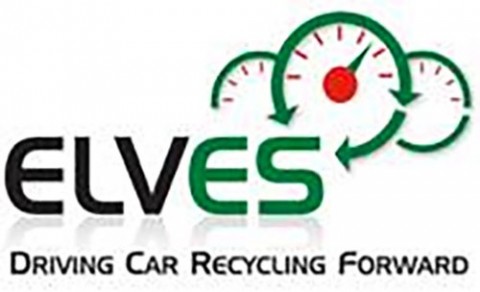Maintaining Your Vehicle
It's your legal responsibility to look after your car so that its in a safe and road worthy condition to drive.
As a car owner there are some basic vehicle maintenance checks that you should do between services. You have a legal responsibility to look after and maintain your car to a safe and road worthy condition.
The Road Safety Authority have produced a 12 Checks booklet which outlines how to carry out 12 checks that help to keep your vehicle in working order such as checking your 1. Tyres, 2. Battery, 3. Lights, 4 Engine oil, 5. Coolant and Antifreeze, 6. Power Steering Fluid, 7. Brake Fluid, 8. Windscreen Wash, 9. Windscreen and Wipers, 10. Safety Kit, 11. Tool Kit and 12. Warning Lights.
Buying a Car
The process of buying a vehicle is generally straight forward, however there are numerous factors that you will need to take into consideration that will influence your decision to buy. For example taking out a loan with a Financial Institution, what is your budget, cost of insurance, the car’s running cost, how long you will own the car for taking into account depreciation and many more factors.

Written off Vehicles
The term ‘write off’ is one that has been coined by the insurance Industry to determine the status of an accident damaged vehicle or theft-related insurance claim. A vehicle is written off by an insurer when the cost to repair to the correct standard using genuine parts is above a certain value relative to the Pre-Accident Value (PAV).
Insurance companies work to strict guidelines and have a duty to return a vehicle to the condition it was prior to an accident. The cost of repair and severity of damage determines the categorization of write-offs. Sometimes even minor cosmetic damage can be deemed as a write- off as the cost to repair is higher than the value of the car and the insurance company classify it as a category of 'write-off'.
There are four different categories of write-offs, while some write-offs are repairable and can be returned to the road, you must ensure that the vehicle has been repaired by qualified personnel with suitable parts to a high standard.
Categories of Write Off’s
Category A: The vehicle is an end of life and must be disposed of at an authorised treatment facility. It must be scrapped and no parts or components must be used as this vehicle was severely damaged. An authorised treatment facility will dispose of the vehicle which is now and End of Life (ELV) and a death certificate or certificate of destruction is issued
Category B: This vehicle cannot be used again however roadworthy components/parts (non-structural) may be recovered from the vehicle and sold. An authorised treatment facility will dispose of the vehicle which is now and End of Life (ELV) and a death certificate or certificate of destruction is issued.
Category A and Category B write-offs cannot be used on the road again as they have been damaged to such an extent that they must be disposed.
Category C: This vehicle is repairable salvage. The categorisation usually applies to vehicles which have sustained significant damage and are identified by insurance companies as being uneconomical to repair which are known as financial write offs. Financial write offs may be used provided they are repaired correctly to a high standard.
Category D: A vehicle is economically repairable but there are other factors involved that cause the insurer to declare the vehicle a write off. A Cat D is repairable salvage.
Category C and D write offs are identified by insurance companies as financial write offs, these vehicles can be repaired and used on the road, provided they are repaired to a standard. Anybody purchasing a financial write off should have it thoroughly inspected to ensure that the physical integrity of the vehicle has not been compromised as a result of its reconstruction and mechanically inspected to ensure it with complies fully with the requirements set out in Road Traffic legislation for use of vehicles on public roads.
Stolen Vehicles
A theft-related insurance claim indicates that the vehicle has been stolen and an insurance company has paid out a claim on it, leaving them as the legal owner. It may have been recovered in tact and returned to the road, or in a damaged condition.
Irish Written Off Vehicles
The National Vehicle and Driver File (NVDF) “locks down” the record of any Irish vehicle that is declared a Total Write-off in Ireland. The current registered owner of the vehicle is written to, if it is still in use, confirming that it cannot be put back on the road and that there can be no further NVDF Transactions for the Vehicle. This means that it cannot have any further changes of ownership so it cannot be used and effectively it cannot be legitimately sold for use on the road.
UK Write-Offs
In October 2017, the UK introduced a new system for insurance write-off categories. Cat N and Cat S classifications were introduced to replace the existing Cat C and Cat D designations, moving the focus from cost to highlight the structural issues that affect safety.
Category S (replaces C): The vehicle has sustained structural damage to any part of the structural frame or chassis. The damage is more that cosmetic and needs to be repaired professionally. Although the car is repairable, the insurer has decided not to repair the vehicle as the cost of the parts, labour and potentially an expensive hire car would significantly exceed the value of the vehicle.
Category N (replaces D): The vehicle is a repairable vehicle which has NOT sustained structural damage, the issue may be cosmetic or a problem with the electrics. The insurer has decided not to repair the vehicle as it isn’t economical to do so.
Structural Repairs
While some write-offs are repairable, one must always ensure that they are repaired by qualified personnel with suitable parts. CSS - Certified Steel Standard, is the Irish national vehicle body repairer standards programme of SIMI. The CSS standard is awarded to vehicle body repairers who undertake structural repairs to accident damaged vehicles. The standard incorporates the industry agreed technical specification for the process of vehicle body repair outlining the processes and procedures directly related to the safe repair of accident damaged vehicles. If your vehicle requires structural repair ask your insurance company or the vehicle body repairer if they are CSS certified. Visit www.cssrepair.ie for more information
End of Life Vehicles

The End-of-Life Vehicle Regulations place responsibility on all importers of vehicles to play their part in the recycling and recovery of vehicles when they come to the end of their useful operational life.
